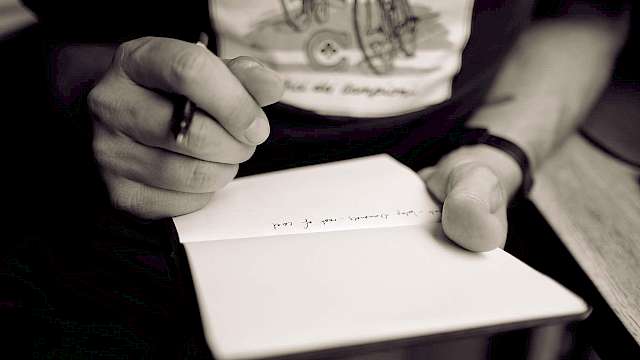How to tell when interviewees are lying is a key aspect of eliciting information. Over the last few years the research focus on lie detection has shifted away from measures which seek to detect lies by monitoring anxiety or arousal and towards innovative measures that emphasize truth tellers’ and liars’ different psychological states. Aldert Vrij (University of Portsmouth, UK) and Ronald Fisher (Florida International University, USA) describe some of the techniques used in investigative interviews and discuss whether they are ready for use in the real world.
Arousal-Based Lie Detection Tools
Behaviour Analysis Interview (BAI). The BAI consists of a set of standardized questions. It is assumed that during the BAI liars feel more uncomfortable than truth tellers and display more nervous behaviours (e.g., crossing legs, shifting about in chairs, performing grooming behaviours, or looking away from the investigator).
Comparison Question Test (CQT). During a CQT examinees are attached to a polygraph machine and are asked relevant questions, e.g., ‘Did you murder Joe Frisbie on March 12, 2016’? and comparison questions, e.g., ‘Before 2015, did you ever physically injure someone who loved and trusted you?’ The theory behind CQT suggests that innocent suspects will become more concerned with the comparison questions than with the relevant questions. Examinees who react most strongly to the comparison questions are considered truthful and examinees who react most strongly to the relevant questions are considered deceptive.
Cognitive-Based Lie Detection Tools
Imposing Cognitive Load. Lying is in interview settings typically more mentally taxing than truth telling. Investigators can exploit this by making the interview setting cognitively more difficult, for example by asking interviewees to engage in a concurrent, second, task when discussing the event. Liars, whose mental resources are more depleted, are less able than truth tellers to cope with additional requests.
Asking Unexpected Questions. When investigators ask a mixture of anticipated and unanticipated questions, truth tellers answer these questions with similar ease, but liars find answering the unanticipated question more difficult than answering the anticipated questions.
Encouraging Interviewees to Say More. When encouraged to add to their original account, liars provide less new information than truth tellers. They do this because they find it cognitively too difficult to add many plausible sounding details or may be reluctant to add more details out of fear that it will provide leads to investigators which can give their lies away.
Strategic Use of Evidence (SUE). During interviews truth tellers are generally forthcoming, whereas liars are more inclined to avoid mentioning where they were at a certain time, or use denials (e.g., denying having been at a certain place at a certain time when asked directly). When investigators ask questions related to the evidence without making the interviewee aware that they possess this evidence, these different behaviours used by truth tellers and liars result in truthful suspects’ accounts being more consistent with the available evidence than deceptive suspects’ accounts.
Verifiability Approach (VA). Liars are aware that accounts rich in detail are more likely to be believed, but also fear that investigators will check such details. Their way around this problem is to provide details that cannot be verified. Liars use this strategy and typically report fewer details that can be checked than truth tellers.
Concealed Information Test (CIT). A CIT polygraph test can be used when examinees deny knowledge of a specific crime. During the test examinees are given questions with multiple-choice answers (e.g., “How did the murderer kill his victim: Did he i) drown her; ii) strangle her with a rope; iii) stab her with a knife or iv) shoot her with a gun?”) A deceptive examinee will recognize the correct answer which produces a (physiological) orienting response. A truthful suspect does not recognize the correct answer and will not show an orienting response.
Which lie detection tools are ready for real-world use?
There is substantial difference in the extent to which the eight lie detection techniques could be said to be ready for real world use in investigative interviews. The two arousal-based techniques fall short on numerous criteria although they are currently used frequently. For example, they are prone to false-positive errors as truth tellers can easily appear nervous or anxious during tests. There is not enough evidence for reliable error-rates for the BAI, and both the BAI and CQT require substantial training and cannot be used as part of standard interviews – making them harder to utilise.
Of the cognitive approaches, there are too many problems associated with the imposing cognitive load technique to recommend it for use in real life, but other techniques are ready for use (‘Encouraging Interviewees to Say More’ and SUE) or ready for use if they continue to receive support in empirical research (‘Asking Unexpected Questions’ and VA). The CIT polygraph test cannot be included in a standard investigative interview but can be a useful tool in addition to investigative interviewing although it has been criticised because it cannot be used in many situations (for example, it can’t be used when the interviewee partially accepts knowledge of the crime).
This article is based on a fuller-length article in the JARMAC, which includes a comparison of each approach against ten criteria including five derived from US Criminal System guidelines. See The Read More section.
Read more
- Vrij, Aldert, and Ronald P. Fisher. 2016. ‘Which Lie Detection Tools Are Ready for Use in the Criminal Justice System?’ Journal of Applied Research in Memory and Cognition 5 (3): 302–7. https://researchportal.port.ac.uk/portal/en/publications/which-lie-detection-tools-are-ready-for-use-in-the-criminal-justice-system(bfa4921a-422d-4a25-86b3-73676e075e80).html.
Copyright Information
As part of CREST’s commitment to open access research, this text is available under a Creative Commons BY-NC-SA 4.0 licence. Please refer to our Copyright page for full details.







